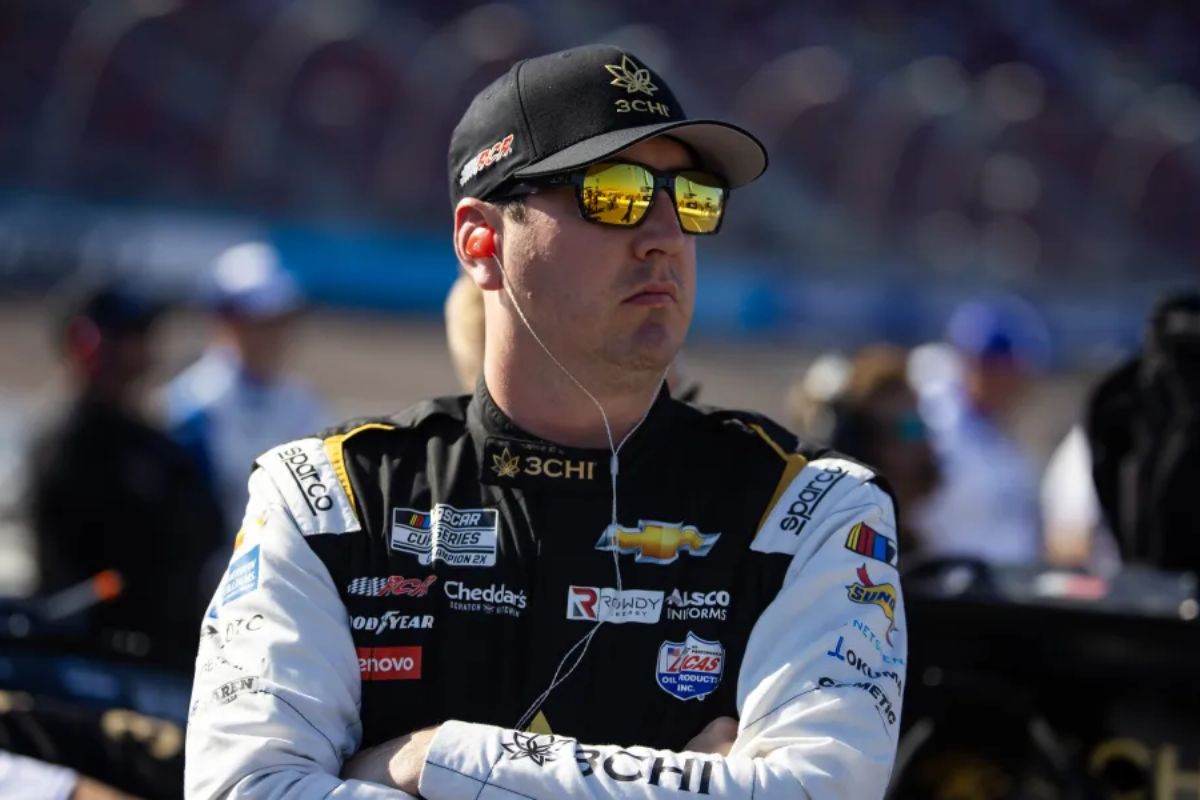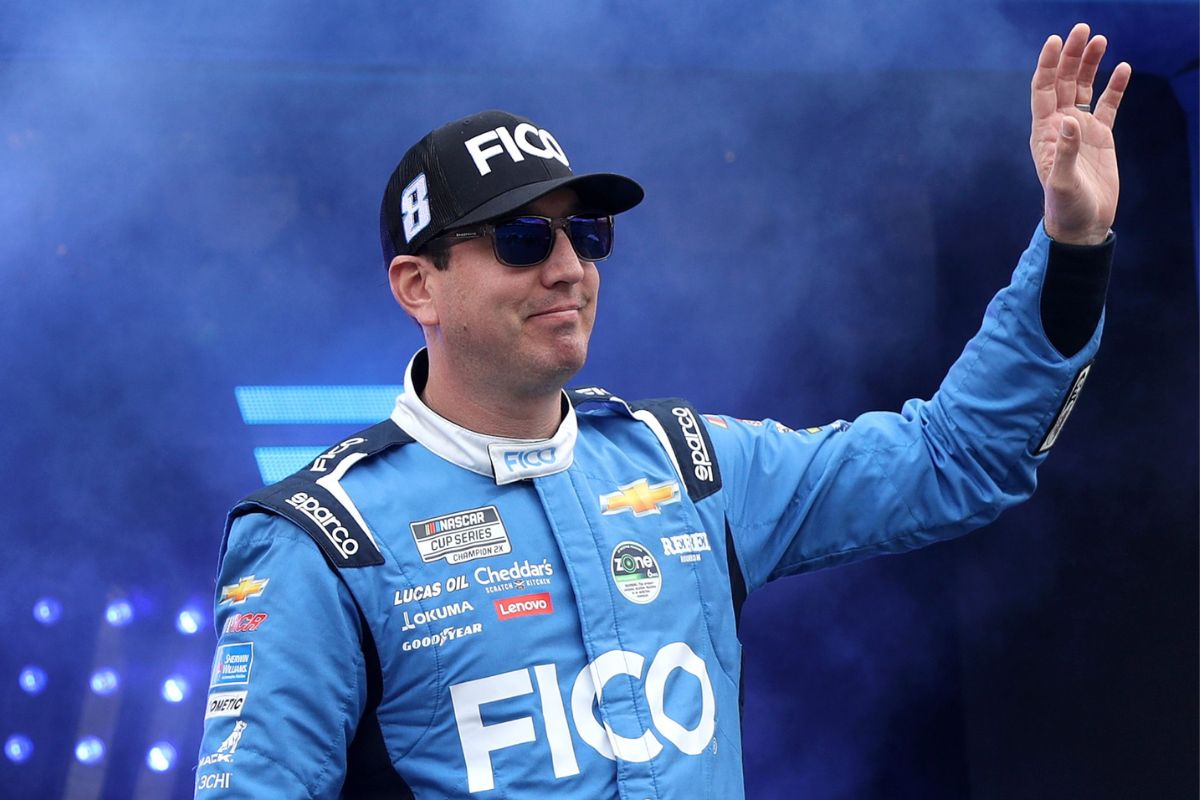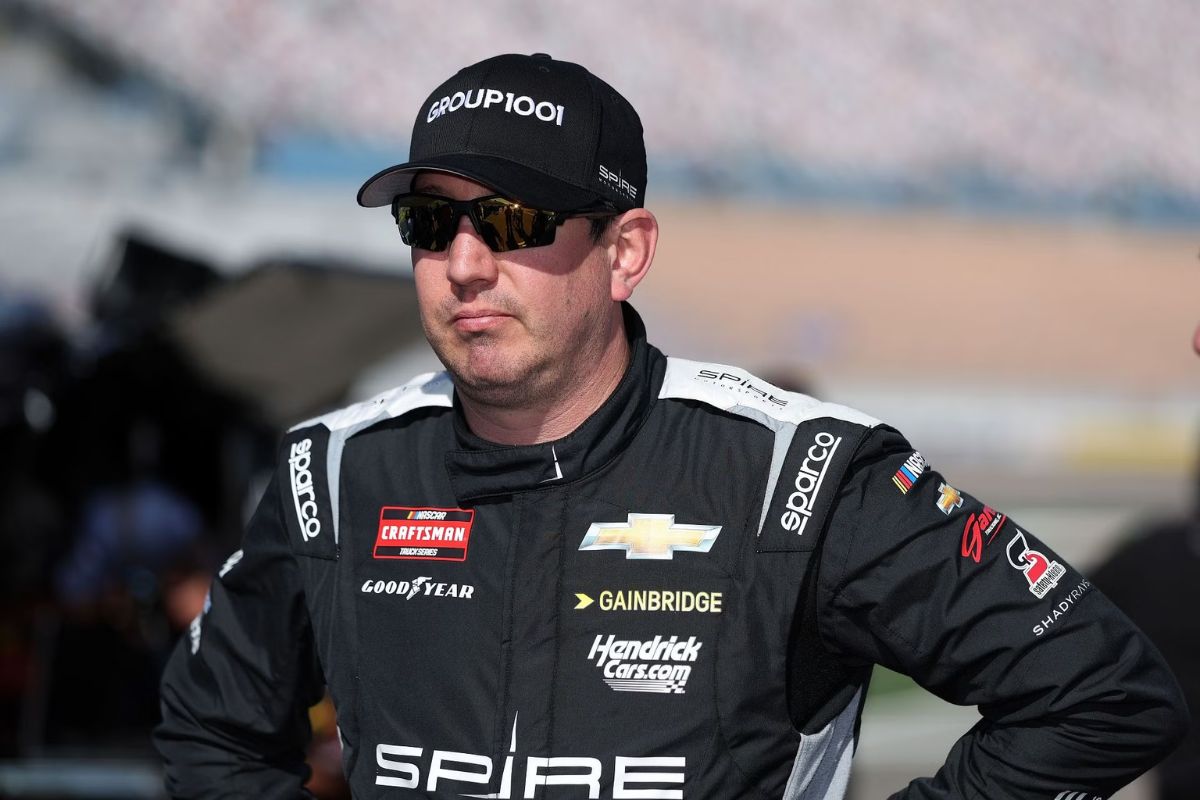Kyle Busch’s NASCAR Blow: In NASCAR, Kyle Busch’s recent performance downturn has not only sparked debates about his career trajectory but has also intensified the search for the next driver who can emulate Dale Earnhardt’s iconic legacy. As Busch approaches the critical AdventHealth 400, his path highlights a larger narrative within the sport: the immense expectations and scrutiny faced by top-tier drivers aiming to meet and exceed historical benchmarks. This upcoming race is not just another event; it is a potential turning point that could redefine Busch’s standing among NASCAR’s greats.
Key Takeaways
- Kyle Busch faces challenges adapting to NASCAR’s parity racing, impacting his dominance similar to Dale Earnhardt.
- Recent performance trends show Busch struggling to maintain consistent top-tier finishes.
- Comparisons to Dale Earnhardt highlight expectations for Busch to dominate, which are not being met currently.
- Fan and community concerns reflect doubts about Busch’s ability to connect with core NASCAR fans as Earnhardt did.
- The shift towards a more competitive and equal racing field diminishes the likelihood of any driver, including Busch, replicating Earnhardt’s era of dominance.
Decline of NASCAR Superstars
In NASCAR, the shift from a singular, dominant superstar in recent years marks a significant change from the iconic eras dominated by figures such as Richard Petty, Dale Earnhardt, Jeff Gordon, and Jimmie Johnson. This transformation is not just a passing phase but a profound alteration in the sport’s dynamics, which has impacted its cultural footprint and commercial appeal. The legends of NASCAR’s past were not merely drivers; they were monumental personas that embodied the spirit and competitive fervor of stock car racing. Their rivalries, victories, and personal stories transcended the tracks, creating a rich tapestry of narratives that fans could connect with deeply.
The current era, by contrast, features a roster of unquestionably skilled but less distinguishable talents. This dilution of standout charisma and overarching narratives in the sport has led to a fragmentation of fan allegiance. Where once the narratives of Petty, Earnhardt, Gordon, and Johnson drew casual viewers and die-hard fans alike, today’s NASCAR struggles to cultivate a similar level of universal appeal and emotional investment.

Kyle Busch’s Concerns
Reflecting on the broader shifts within NASCAR, Kyle Busch has voiced significant concerns about the current generation’s inability to resonate deeply with the sport’s core fanbase. Busch, a seasoned driver with multiple championships, highlights a crucial challenge facing NASCAR today: the erosion of connection between new drivers and the sport’s most ardent supporters.
“I’m not sure what it is, but you have the die-hard fans of NASCAR—of Jeff Gordon, Dale Earnhardt, Rusty Wallace, Terry Labonte, Mark Martin, Harry Gant … you name it. Our world now, in 2024, has a lot different fan base that’s following along.”
“They kind of all probably went away, just stopped following as much. Which is hard to say because honestly, when you look at NASCAR, the fans love the drivers. The driver star power, that’s what brings people to the racetrack, is the drivers.” – Busch
Busch’s critique extends beyond mere nostalgia for the racing giants of yesteryear. He points to a systemic issue where the new crop of drivers struggles to forge a strong identity in the eyes of fans who traditionally look for larger-than-life figures, akin to the legendary Dale Earnhardt. The implication here is profound, suggesting that NASCAR may be at a cultural crossroads, where the essence of what made it a spectator behemoth is at risk of dilution.
Moreover, Busch’s observations are echoed by segments of the NASCAR community who feel alienated by the current trajectory of the sport. They see the lack of star power not just as a failure of individual drivers to captivate but as a symptomatic issue of the modern racing environment.
Impact of Parity Racing
The shift toward parity racing in NASCAR, aimed at leveling the playing field through the implementation of the Next-Gen car, has remarkably altered the competitive landscape, diminishing the once-common phenomenon of individual or team dominance. This systemic change has introduced a new era where the predictability of race outcomes has notably decreased, leading to positive and negative ramifications for the sport.
- Increased Competition: The uniformity in equipment and data access has tightened the field, making races more unpredictable and often resulting in closer finishes. This has heightened the excitement for some fans who appreciate the increased challenge faced by drivers.
- Diminished Dominance: Historically, NASCAR has seen periods dominated by iconic figures and teams. The new parity measures have diluted this aspect, making it harder for any one team or driver to maintain prolonged supremacy in the sport.
- Fan Base Polarization: Long-time enthusiasts, accustomed to following dominant dynasties and star drivers, have found the new parity less appealing. This has led to a factional split within the fan base, with some decrying the loss of the ‘old NASCAR’ drama.
- Strategic Shifts: Teams and drivers are now compelled to adapt their strategies. Without the advantage of superior equipment, the focus has shifted more towards optimizing team dynamics, pit stop efficiencies, and on-the-fly tactical decisions during races.

Kyle Busch’s Performance in 2024
Amid the evolving competitive dynamics introduced by parity racing, Kyle Busch’s performance in the 2024 NASCAR season represents the challenges and resilience inherent in adapting to this new racing environment. Switching to the RCR team has not been devoid of its trials for Busch. Known for his aggressive and skillful driving, adjusting to a different team’s culture and car setup has required recalibration of his well-honed instincts and strategies. However, recent races suggest a big adaptation, highlighted by two top-ten finishes in his last three starts.
This incremental progress is vital. It signifies not only Busch’s capacity to adjust and refine his approach but also his unyielding commitment to excel under radically transformed competitive conditions. The upcoming Kansas tri-oval track race looms as a significant marker of his ongoing adjustment process. A victory there would not only affirm his growing comfort with his new team but also reinforce his status as a formidable competitor in this parity-driven era of NASCAR.
Hope for a Comeback
The question arises in the minds of fans and analysts, particularly as the motorsports world has witnessed the resilience and resurgence of other drivers, such as Chase Elliott’s spectacular comeback win at Texas. The anticipation builds as the AdventHealth 400 at Kansas Speedway approaches, presenting Busch with a prime opportunity to reignite his career.
- Recent Performance Trends: Busch has consistently finished in the top ten in recent races, showcasing a level of consistency and skill that had been somewhat erratic in previous seasons. This indicates a positive trajectory in his performance metrics.
- Opportune Timing: The upcoming race at Kansas Speedway is historically a track where Busch has performed well. This event could very well be the catalyst that propels him back into the forefront of championship contention.
- Fan and Team Support: The steadfast support from fans and the strategic expertise of his team provide a solid foundation for his comeback. The synergy between a driver’s skill and team strategy often dictates the success on the track.

News in Brief: Kyle Busch’s NASCAR Blow
Kyle Busch’s trajectory within NASCAR highlights the complexities of sustaining excellence amid evolving competitive landscapes. The AdventHealth 400 represents not just a race but a crucial turning point that could redefine Busch’s career path. Should he seize this opportunity, it may propel him back towards championship competition, reaffirming his potential to achieve a legendary status akin to that of Dale Earnhardt.
Our Reader’s Queries
Q: Did Kyle Busch ever race Dale Earnhardt?
A: In a pivotal moment spanning the twilight of Earnhardt’s career, a brash young Kyle Busch, echoing his older brother’s resolve from years past, refused to tolerate any hint of intimidation from the legendary Earnhardt. This defiance culminated in a dramatic showdown at the 2005 Golden Corral 500, where Busch made a bold statement by tangling with Earnhardt on the track.
Q: What happened to Dale Earnhardt racing?
A: The tragic conclusion of Earnhardt’s remarkable journey unfolded on the final lap of the Daytona 500 at Daytona International Speedway on February 18, 2001. A fateful collision with Ken Schrader’s No. 36 car led to a devastating three-car crash, claiming the life of the beloved racing icon.
Q: What happened to Kyle Busch in the Daytona 500 this year?
A: In a cruel twist of fate, Kyle Busch found himself ensnared in the chaos of the infamous “Big One” at the hands of Brad Keselowski’s misfortune. Despite a strong showing and contention near the front for much of the race, Busch’s hopes were dashed when the wreck unfolded, depriving him of a potential shot at victory.
Also Read: Kyle Busch Responds to NASCAR Struggles Stuns Fans
